Invisalign® Clear Braces – Springfield, NJ
Discreetly Align Your Smile in Record Time

When someone pulls out their phone or camera to snap a picture, do you automatically smile with your mouth closed to hide your crooked teeth? Even if you’re past the age where it’s socially acceptable to wear braces, it’s never too late to straighten your pearly whites. Thanks to Invisalign clear braces in Springfield, NJ you can achieve a straight smile without wearing a mouthful of metal. At Skyline Dental, Dr. Henkin can prescribe these custom-made clear trays that are designed to discreetly align your smile in record time. If you’re looking for an easy way to boost your confidence in your grin, contact us today to learn whether Invisalign is right for you!
Why Choose Skyline Dental for Invisalign Clear Braces?
- Discreet Appearance That Onlookers Won’t Notice
- Treatment Custom-Made for Each Patient
- Often Able to Work Faster Than Traditional Braces
How Invisalign Works
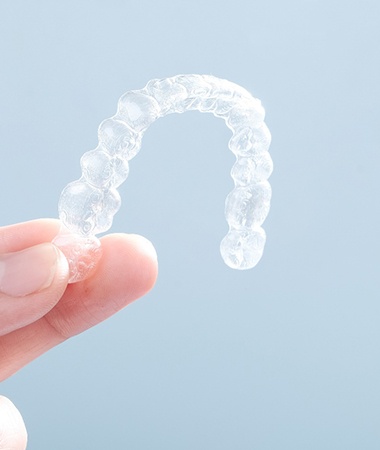
Your Invisalign journey begins with a consultation, during which Dr. Henkin can take digital impressions of your mouth. These models are used to create a series of clear plastic aligners, each one designed to shift a small portion of your smile until every one of your teeth is perfect aligned. For maximum effectiveness, you should wear each set for at least 22 hours a day, only removing them to eat, drink, and clean your teeth.
You’ll still be expected to visit us every few weeks throughout the course of your treatment, but these appointments shouldn’t last long. In most cases, we’ll simply check your progress and give you your next few sets of aligners.
Benefits of Invisalign

Hands down, one of the biggest benefits of Invisalign is how discreet the aligners are. However, that’s just one reason to consider this innovative orthodontic treatment. Besides being translucent enough to avoid being noticeable, it comes with several additional benefits, including:
Learn More
Shorter Average Treatment Timeline
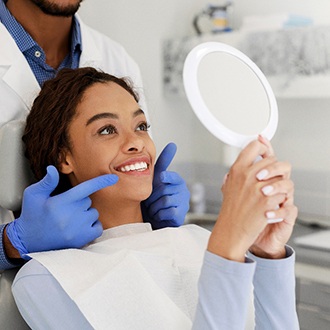
Typically, traditional braces take between 24 and 36 months to align your teeth. Invisalign, on the other hand, has an average treatment timeline of only 12-18 months. So, if you are interested in getting the results you want sooner rather than later, you should consider clear aligners! At your consultation, we can conduct a comprehensive oral exam, create your custom treatment plan, and provide you with an estimate of how long it will take to get the results you desire.
Improved Comfort

Invisalign aligners aren’t just clear; they are designed with your comfort in mind. As such, they won’t irritate your gums or cheeks as much as braces do. Plus, if your teeth start to feel a bit sore as they begin to move, you can quickly alleviate the discomfort by sipping on cool water or taking OTC pain medication (following the directions on the label, of course). Sticking to extremely soft foods, like plain yogurt, will help too!
No Dietary Restrictions

In an effort to prevent common orthodontic emergencies, like broken brackets, patients with traditional braces are given a list of foods to avoid. A few examples include whole apples, raw almonds, and tortilla chips. The good news is that there aren’t any dietary restrictions with Invisalign. Since the aligners are removable, you can enjoy all of your favorite foods throughout your orthodontic treatment. Just do your best not to over-indulge on cavity-causing ones, like potato chips and ice cream.
Fewer Check-In Visits
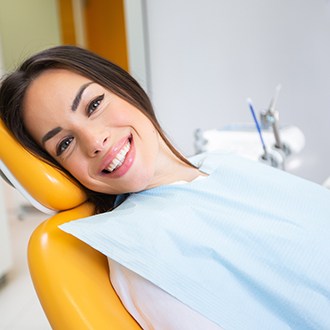
With traditional braces, monthly adjustment appointments are required to keep your teeth moving in the right direction. That’s not the case with Invisalign. Since the aligners don’t need to be tightened like braces do, you’ll come in every 6-8 weeks instead of every 4. Not only that, but the check-in visits are usually less than 30 minutes, so you’ll spend less time in the dental chair overall.
Better Dental Hygiene

One downside of traditional braces is that it’s difficult to maneuver around the brackets and wires, which is why many patients end up buying special dental care products, like interproximal toothbrushes. With removable aligners, Invisalign patients don’t experience the same hassle. In fact, their oral hygiene regimen remains relatively unchanged.
Living with Invisalign Aligners

Of course, choosing Invisalign and living with Invisalign are two different things. Fortunately, even the latter is quite easy since the aligners are discreet, comfortable, and removable. If you’d like a little more information on the topic, including how to make wearing your trays for 20+ hours a day easy, read on!
Learn More
Wearing Your Trays

Wearing your aligners for 20+ hours a day is essential if you want to stay on-track with your treatment plan. Initially, this sounds like an easy task, but the amount of aligner-free time you have each day goes by quickly. So, it’s important to only take them off when it’s absolutely necessary, like before eating your breakfast. Then, put them back on immediately after (once you’ve brushed your teeth and cleaned your trays, of course).
Cleaning Your Aligners
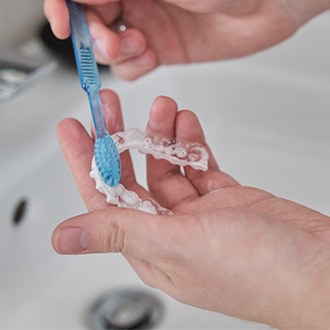
Good news: you don’t need any expensive oral hygiene products to keep your aligners stain and odor-free. All you need is clean, cool water, a soft-bristled toothbrush, and clear, mild dishwashing soap. If you find that you need a little extra help keeping your trays in pristine condition, you can also soak them in a mixture of lukewarm water and the cleaning crystals that came in your welcome kit.
Eating & Drinking

There’s really only one rule: you need to take your aligners out first (unless it’s water). Not only will this prevent stubborn stains from surfacing, but it will also prevent the plastic from warping or cracking. So, always take them off, rinse them with clean, cool water, and place them in their designated case. When you’re done enjoying your meal or beverage, brush your teeth, rinse your aligners, and put them back on.
Losing or Damaging a Tray

Both losing and damaging a tray can lead to significant treatment plan delays, so it’s important that you act quickly! If you can’t find one or both of your aligners, then do your best to re-trace your steps, starting from the last place you know you had them. If your attempt to find them is unsuccessful, then we recommend calling us ASAP. That way, we can determine if it’s safe to move onto the next set in the series or if we need to have a replacement set made.
Attending Routine Check-Ins
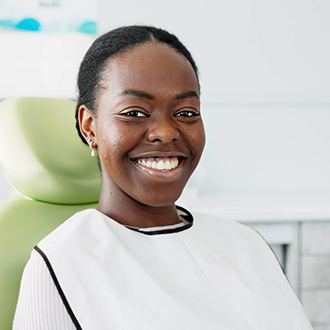
Although you don’t need to schedule monthly adjustment appointments with Invisalign, you do need to come to our office every 6-8 weeks so we can monitor your progress. If you’ve been wearing your aligners for 20+ hours a day, there’s a good chance that your teeth will be moving as anticipated. If that’s not the case for one reason or another, then we can quickly determine what needs to be done to get you back on-track.
Who Can Invisalign Help?
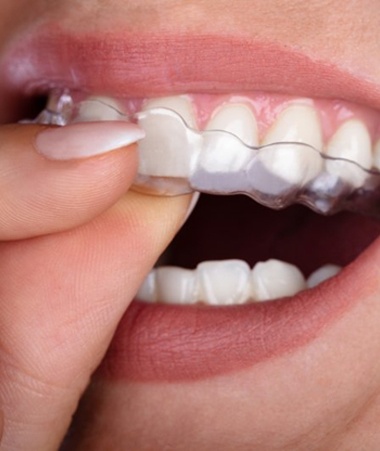
First, we need to mention that Invisalign requires more responsibility than traditional braces because the aligners are removable. Therefore, you must be disciplined enough to wear them as prescribed. As a result, Invisalign is typically only recommended for adults and older teenagers. You must also have adequate oral health before beginning treatment. If we detect issues like gum disease or tooth decay, they’ll have to be addressed prior to wearing the aligners.
With all of that said, Invisalign can address several common orthodontic problems, including:
Learn More
Crowded Teeth
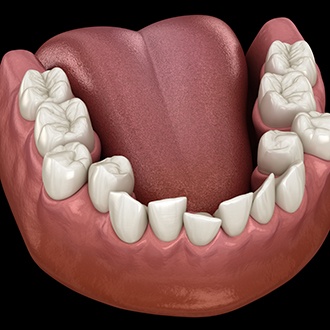
Oftentimes, patients struggling with overcrowding only come to visit us if they are unhappy with the appearance of their smile. However, this orthodontic problem can also increase the chances of decay or an infection developing. That’s why we recommend scheduling a consultation with us sooner rather than later! Our goal is to move your teeth into proper alignment before you run into any issues.
Gaps Between Teeth
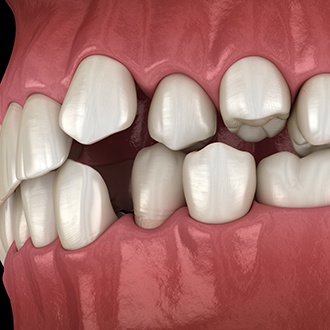
Gapped teeth are another common orthodontic problem. Fortunately, Invisalign is often a solution! If that’s the case for you, then we will take impressions of your teeth, create a custom series of clear aligners, and give you specific instructions on how to take care of them. Since the average treatment timeline is only 12-18 months, you’ll have your dream smile before you know it!
Overbite
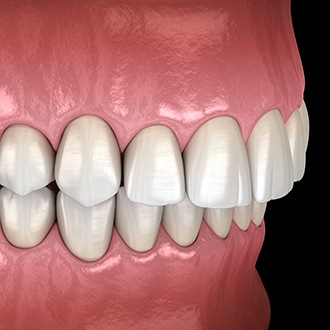
An overbite is when the upper teeth jut out beyond the lower ones more than they should. Although it may not seem like an issue, it can actually lead to several serious consequences – from trouble enunciating clearly to difficulty chewing properly. That’s why we encourage patients to schedule a consultation with us to explore their treatment options, even if the situation doesn’t seem urgent.
Underbite

If your lower teeth sit in front of your upper ones, then you likely have an underbite. Like overbites, underbites can negatively impact the look, health, and function of your smile. So, even if your case is minor, don’t wait – schedule a consultation with us to see if you’re a candidate for Invisalign! If the answer is “yes,” then your journey to a healthier, happier smile will be completely metal-free.
Crossbite
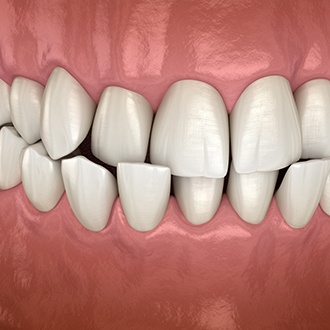
Crossbites often aren’t as talked about, but that doesn’t make them any less serious. In fact, crossbites can lead to chronic jaw pain, trouble chewing properly, premature wear and tear on your teeth, and several other serious consequences. For all of these reasons, we recommend getting in touch with us so we can assess the severity of your case and review your treatment options.
Open Bite
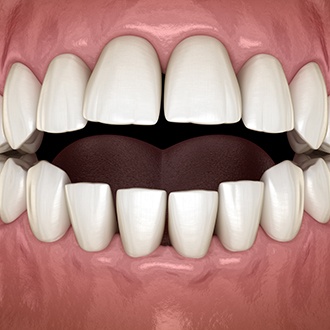
The last orthodontic problem on this list is an open bite, which is when there is a space between the upper and lower teeth that prevents a patient from biting down all the way. If you are struggling with this bite issue, we have good news: Invisalign may be the solution you’ve been looking for! The best way to find out is by scheduling a consultation with us, so don’t hesitate to get in touch.
Understanding the Cost of Invisalign
If you’re interested in straightening your teeth with clear aligners, then Invisalign is one of the most popular options out there. While this treatment can help improve your overall smile, you’ll want to be familiar with the cost before going forward with it. During your initial consultation, our team will go over the details of the process as well as discuss the fees you can expect to pay. Until you come visit us, here’s what you should know about the cost of Invisalign.
Factors That Affect the Cost of Invisalign

Believe it or not, there is actually no definitive cost of Invisalign. Each patient has different orthodontic needs that can influence the amount they may end up paying. Some of the most common factors that can affect the price of Invisalign include:
- Whether you’ll require any preliminary procedures, such as tooth extractions, fillings, or gum disease treatment before starting the process
- The degree to which your teeth are misaligned
- The number of arches that need straightening
- Your age
- Your treatment compliance
Ultimately, the only way to accurately know the price of your Invisalign treatment is to schedule a consultation with your cosmetic dentist in Springfield.
Invisalign vs. Smile Direct Club™: Which Costs More?
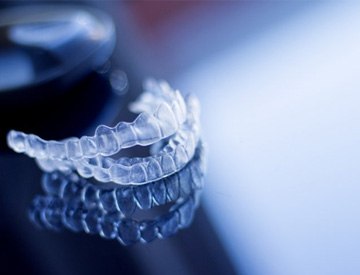
Those working on a budget might consider getting do-it-yourself clear aligners such as Smile Direct Club™ to save money. In many cases, this treatment can go for about $2,000 whereas Invisalign might cost somewhere between $3,000 and $8,000. Although the former may seem more financially appealing, you’ll want to keep the quality of the product in mind.
DIY clear aligners usually use cheaper plastic material, which isn’t very durable and may not be as reliable. In some cases, they could cause problems that would need professional help anyway. Invisalign, however, has a track record of being consistently effective, meaning you can trust the quality of the treatment every step of the way. Your dentist will also be closely supervising your process, so there’s little room for error.
Does Dental Insurance Cover Invisalign?
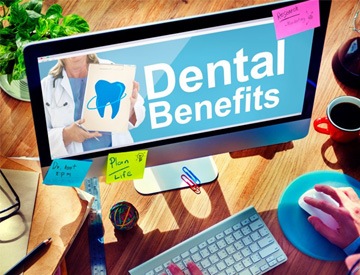
Some dental insurance providers will offer coverage for Invisalign, but you’ll need to double-check with your company to be sure. If your policy does include this service in the plan, then you might be able to lower your out-of-pocket expense by about $1,000 or more. Be sure to check with your provider before deciding on Invisalign, and feel free to consult our team about this as well so we can make this a smoother process for you.
Options for Making Invisalign Affordable

Are you currently uninsured? That’s okay! Our team understands the significance of being able to get the dental treatment you deserve, and we don’t want you to worry too much about the cost. That’s why we’re proud to partner with CareCredit, which can offer little-to-no-interest plans that allow you to make monthly payments for your Invisalign process and other dental services.
Invisalign FAQs
How Long Does Invisalign Take?
While the average treatment time for Invisalign falls between 12 and 18 months, it’s important to keep certain factors in mind when thinking about your own treatment. The length of your care will vary significantly on the severity of your misalignment as well as your commitment to completing your Invisalign treatment plan. In cases where your misalignment is mild, you can expect your treatment to take about 6 months (in most cases). While wearing aligners for 18 months may sound difficult, you’ll want to remember this is still a fraction of the amount of time needed to complete orthodontic treatment using metal braces. By staying on top of routine dental visits to our office and following all our instructions, you can complete your treatment as efficiently as possible.
What if My Invisalign Broke?
Invisalign’s clear aligners are made from durable plastic. However, there is always the possibility that they crack, scratch, break, or become damaged in some way. If a hairline crack occurs, your aligner can still be used. However, you’ll need to use extra caution when removing it and putting it back into your mouth. When placing your aligner, use even pressure to minimize the risk of bending. Do not try to repair the aligner on your own. Instead, contact our office directly. We’ll provide a recommendation from there based on your situation. We may tell you to go back to a previous pair of aligners in your series until we can get your replacement. You may be able to switch to the next pair if you’re within three days of finishing your current set.
Is Invisalign Cheaper than Braces?
No two smiles are alike. That means the cost of your orthodontic treatment, whether you choose Invisalign or metal braces, will depend on many factors. The biggest factor by far will be the severity of your misalignment and other orthodontic concerns. Invisalign will typically cost as much as traditional braces, but they are both typically close to $5,000 in total cost. However, factors like your current oral health, commitment to your treatment plan, and your smile’s misalignment can impact the final price you pay. While Invisalign can be more expensive than braces in certain cases (due to lack of insurance coverage), you’ll need to weigh those aspects with how much you want to enjoy the benefits Invisalign provides. If you have dental insurance, we’ll gladly look over your plan and confirm if any coverage is available.
How Do I Clean My Invisalign?
Invisalign sells their own cleaning system complete with proprietary cleaning crystals to keep your aligners as clear and bacteria-free as possible. Using them is simple and easy as you complete your daily brushing and flossing. With that said, you may also use a soft-bristled toothbrush to gently clean your aligners as this will prevent food debris from sticking to them. We do not advise using hot water to clean them as this can warp the plastic.
